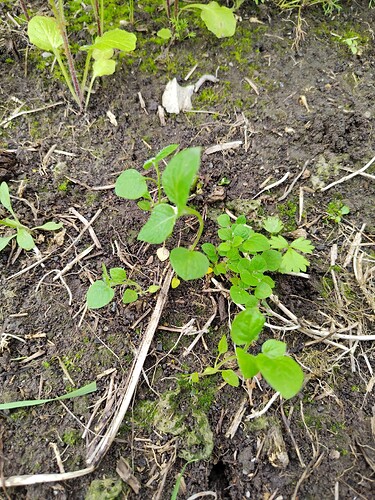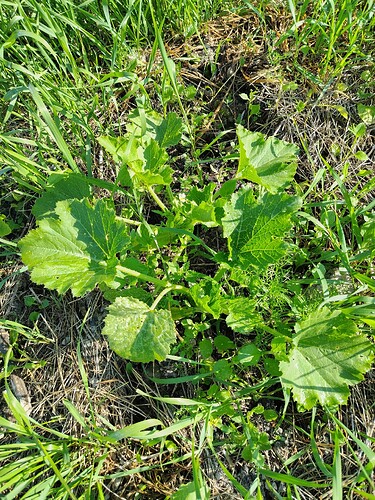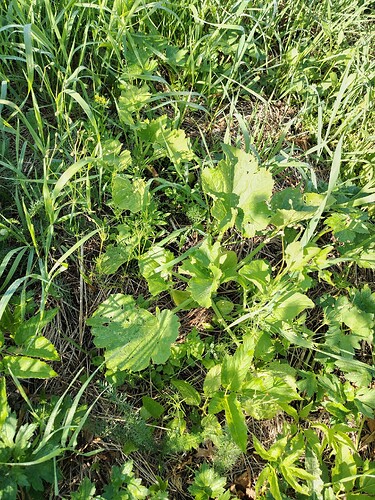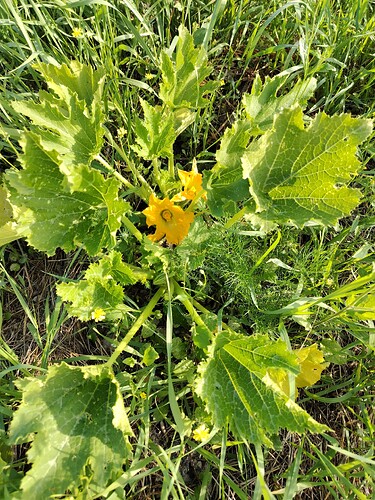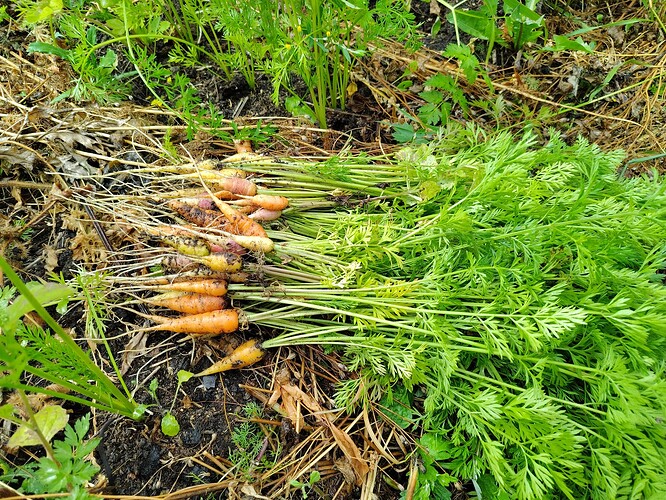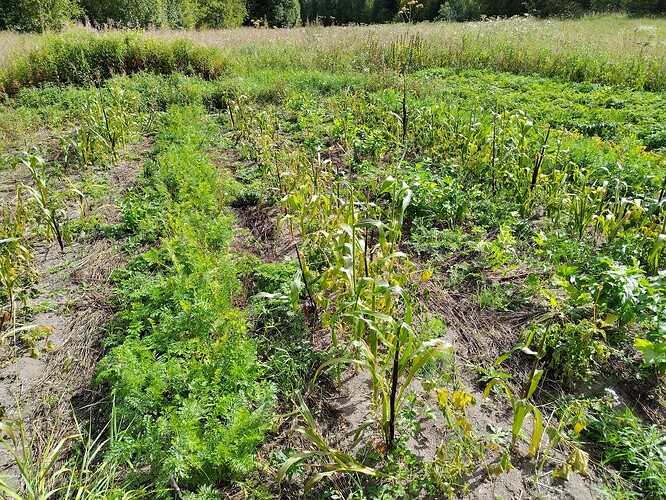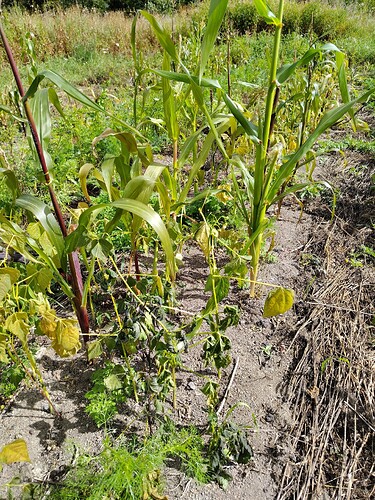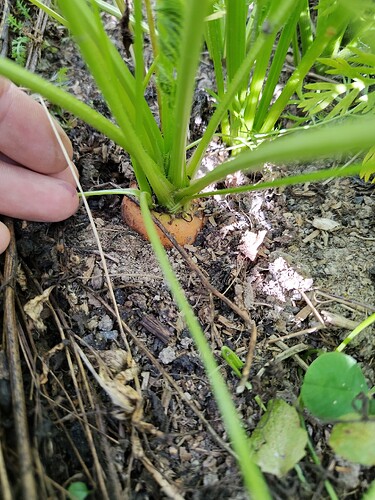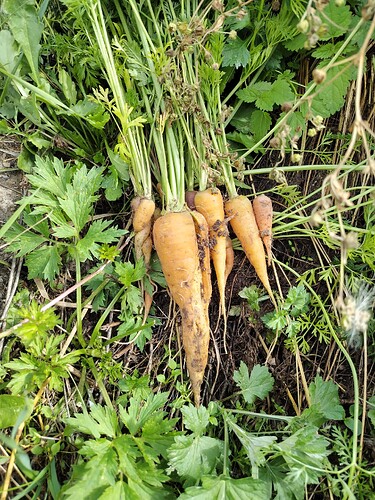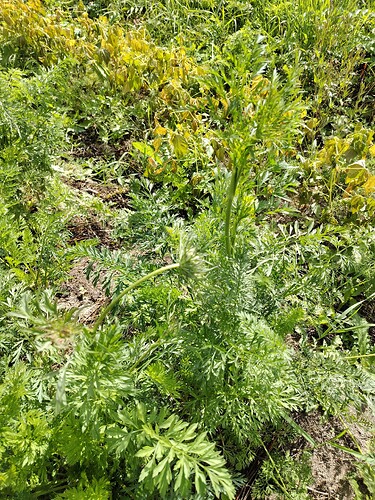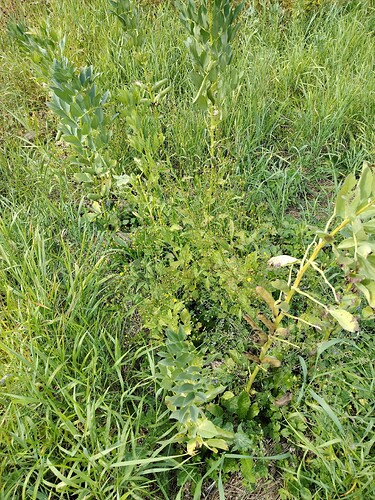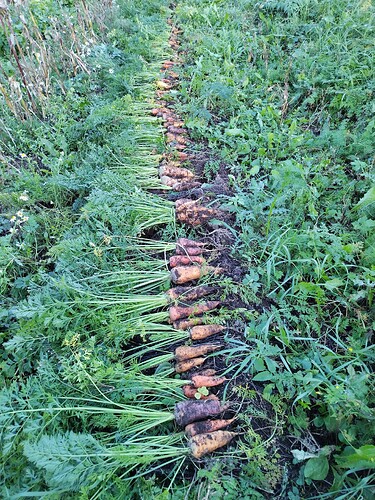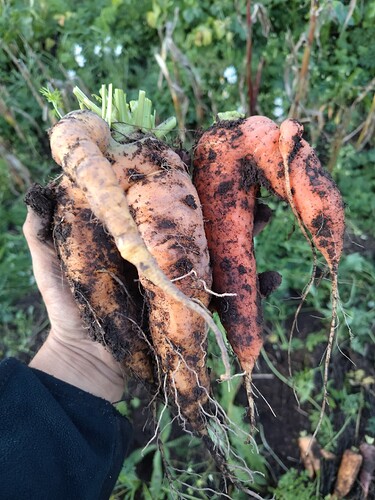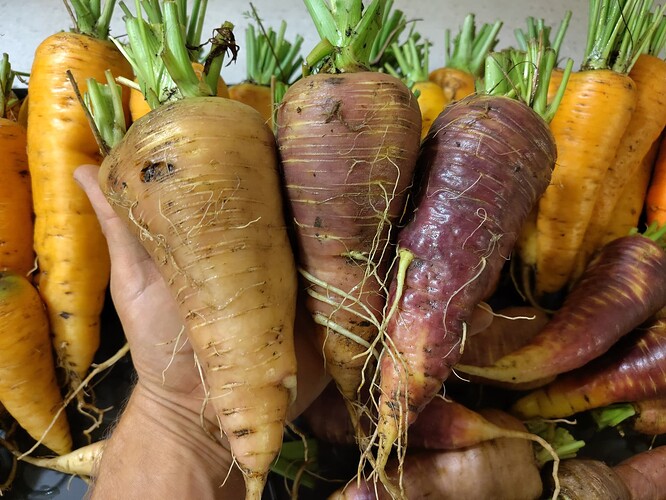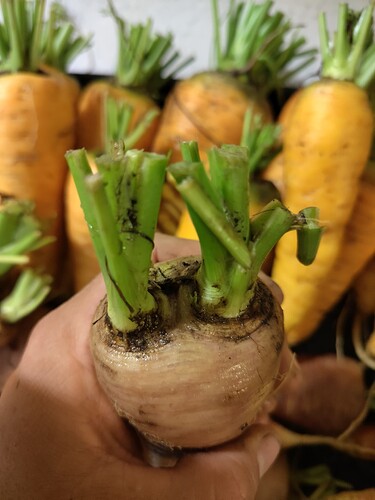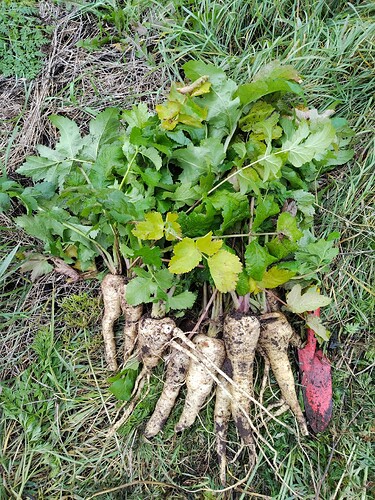Plan was this time not to leave 2 weeks between visits, but had more important things to do and when I had the opportunity last week weather was just unpredictible enough to make the trip. Yesterday was also overcast with danger of rain and I kept looking at the radar, but nothing showed in the radar nor did it rain. Unlike today, which made it urgent to get something done as getting to the plot would get more wet for few more days.
Weeds had again taken over and I’m starting to think supressing weeds with hay mulch isn’t going to work with well established perennial weeds. It’s a little too much work to keep them under control, but it’s also little too much competition for plants that I actually want to grow. Weeds are also unevenly distributed which makes competition selection pressure unfair. For next year I’m planning to cover the main plot fully with black biofilm. It has worked well in my other plot even covering the edges, although weeds have tried hard to push it up. I was hesitant to use it as plan was not to use any added help (black surface making growing conditions warmer), but this much weed pressure is a bit overkill.
Besides favas, all species that I grew here last year are a little behind. Even though even last year getting seeds was difficult, I’m not quite yet worried. Last year they had an early start, but growth must have been close to half what it could have been because of the drought. Later this week it’s supposed to warm up more long term and with the ground soaked I’m hoping they can catch up a little. I did now some fast weeding and culling. Some spots still have extras, but quite a many spots had had maybe little too heavy weed pressure.
Some maximas with fairly little weeds.
Some summer squash with a bit heavy weeds.
Tomatillos poking through. Small seeds and heavy weeds with insufficient weeding don’t mix that well. Still some had managed to grow quite a bit. Still not ideal, but should have enough time to make some fruits.
Favas weren’t all lost, but just late. I’d say about third have emerged now which should give fairly good seed increase. Then next years I’ll make more selection based on early germination.
Best tomatillo ready to take over he world.
One of the biggest maximas.
Two of the best summer squash right next to each other. There seems to be enough space on either side that I don’t need to cull one, but if one doesn’t like to set fruits early then it has to go.
Best moschata. I don’t have high hopes, but I’m still hoping some of the better can make male flowers that I can use to pollinate fruits on the other plot.
Best cucumbers don’t look much worse than the ones on the other plot with better conditions. Last year they were so fast once they got going that I wouldn’t be surprised if they really take over with warm weather.
Side plot I didn’t have time to do much more than check progress. Weeds are growing well there also. Have to make time to weed this part also asap. Luckily there isn’t that much to do on the other plot at the moment.
Graincorn still in good pace to ripen in time. Beans also doing well. Little weeding to be done.
Parsnips are strong enough to push through weeds.
Tops of carrots are just visible.
Some potato berries must have fallen there. This year I’m planning on planting fruits or pieces of them in the fall to save me the hastle of saving seeds.
Tps sown in early june are coming up. Them I needed to weed or they’d be completely covered.














